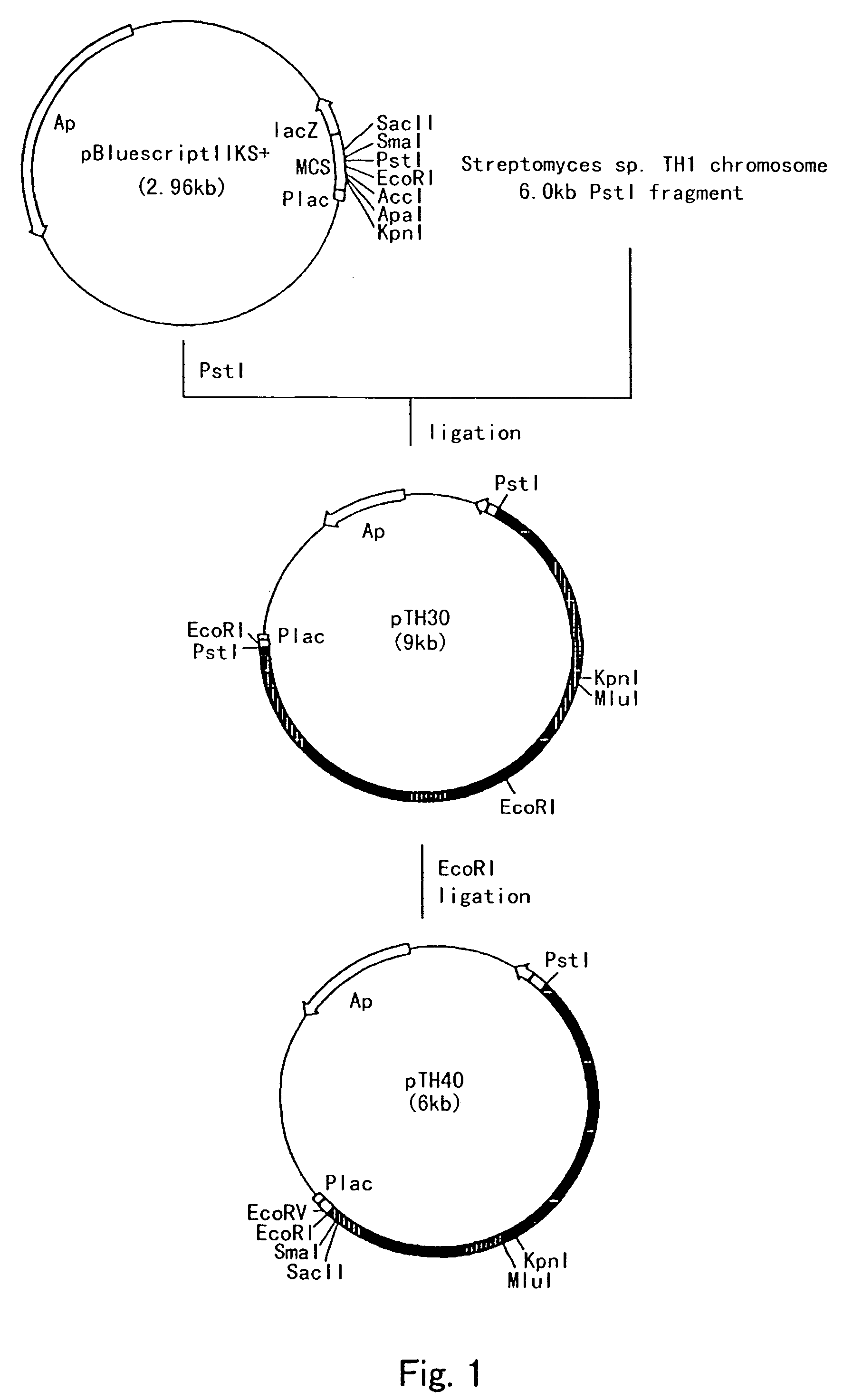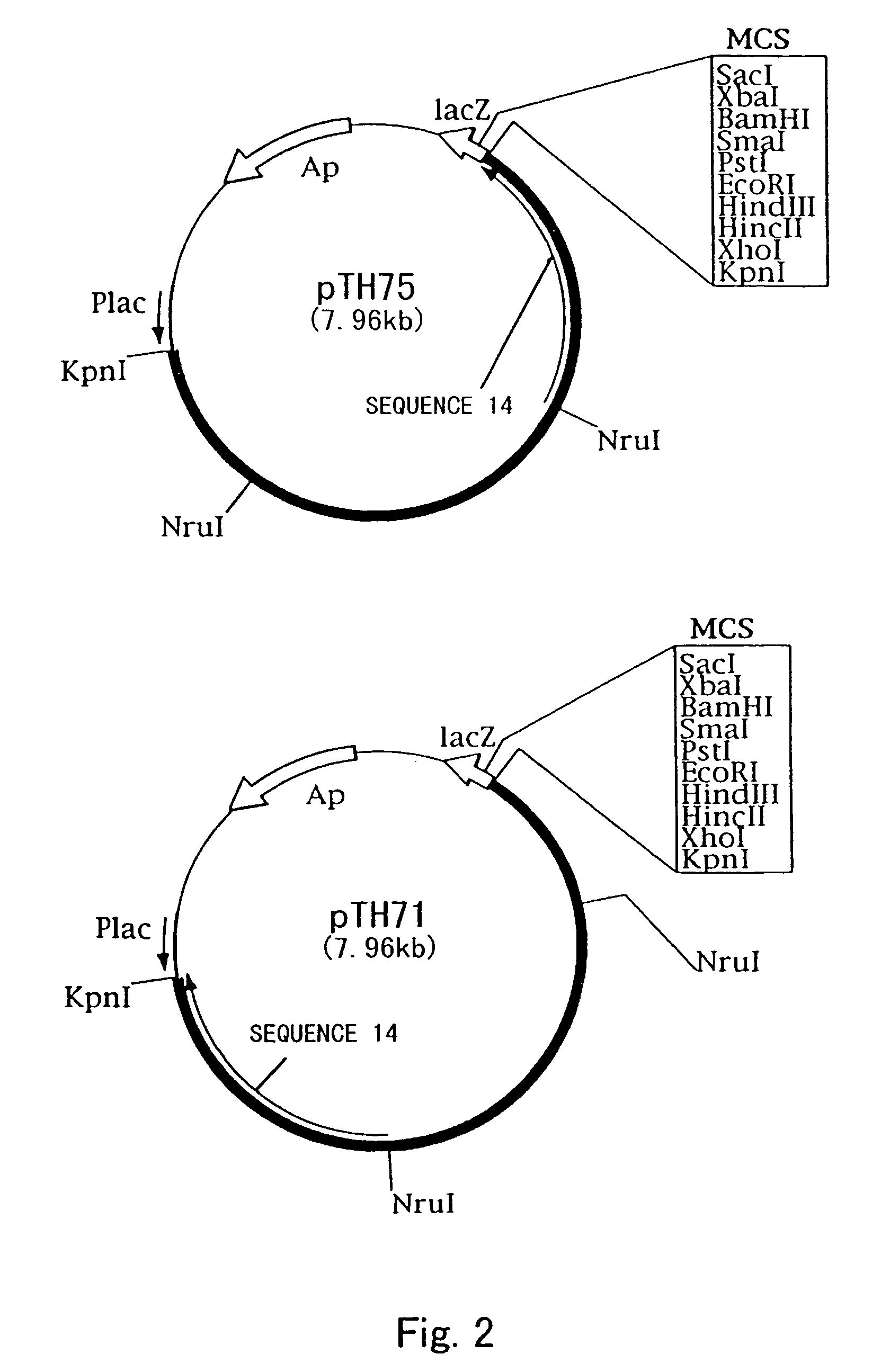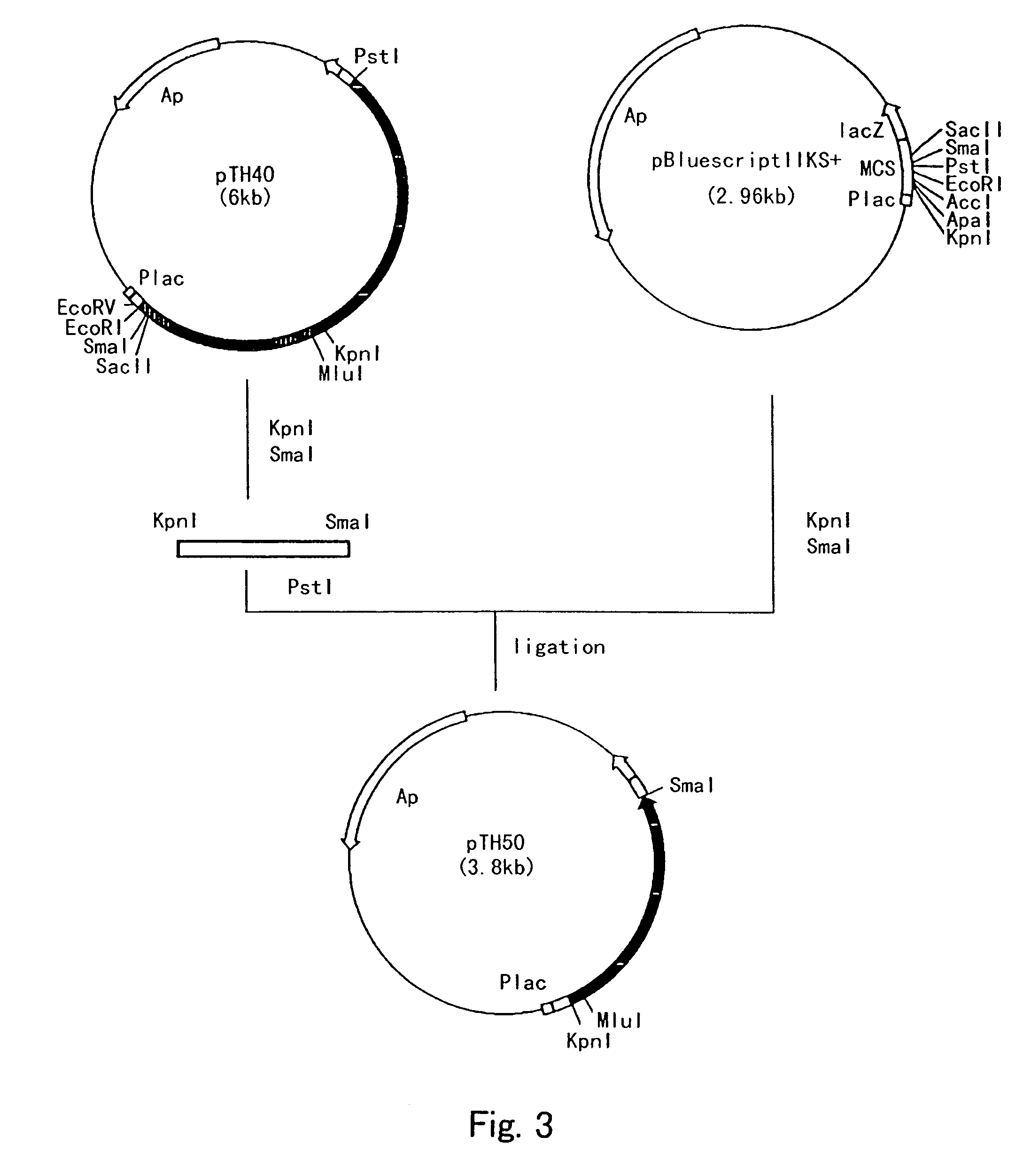Process for producing cis-3-hydroxy-L-proline
- Summary
- Abstract
- Description
- Claims
- Application Information
AI Technical Summary
Benefits of technology
Problems solved by technology
Method used
Image
Examples
example 1
(1) Production of Cis-3-hydroxy-L-proline:
[0208]SR3 medium comprising 1.0% glucose, 1.0% soluble starch, 0.5% yeast extract, 0.5% tryptone, 0.3% meat extract and 0.05% magnesium phosphate, and adjusted to pH 7.2 with 6N NaOH, was put in test tubes (diameter 25 mm×length 200 mm) in an amount of 10 ml each and sterilized at 120° C. for 20 minutes. One loopful of cells of Streptomyces sp. TH1, that had grown in HT-agar plate medium comprising 1% soluble starch, 0.2% NZ amine, 0.1% yeast extract, 0.1% meat extract and 1.5% agar, adjusted to pH 7.2 with 6N NaOH, and sterilized at 120° C. for 20 minutes, was inoculated into the above-mentioned SR3 medium in each test tube and cultivated at 28° C. for 2 days by shaking. The resulting culture was used as the 1st seed culture in the following step.
[0209]SR3 medium was put in 2 liter-Erlenmeyer flasks in an amount of 200 ml each and sterilized at 120° C. for 20 minutes. The above-mentioned 1st seed culture was inoculated in the SR3 medium in ...
example 2
Purification of Cis-3-hydroxy-L-proline:
[0224]One hundred gram of the wet cells which were obtained in (1) of Example 1 was suspended in 1 liter of the reaction mixture (a) as described in (1) of Example 1, that had been put in a 2 liter-beaker. The suspension was allowed to stand at 30° C. for 5 hours with stirring.
[0225]After the reaction, the cells were removed from the reaction mixture by centrifugation, and cis-3-hydroxy-L-proline produced in the supernatant were determined by the same method as described in (1) of Example 1.
[0226]As a result of the determination, it was verified that 809 μM (106 mg / liter) of cis-3-hydroxy-L-proline was produced in the reaction mixture.
[0227]The supernatant separated from the reaction mixture was adjusted to pH 4.5, and passed through a column packed with 200 ml of an ion-exchange resin, Diaion SK1B (NH4+ type, produced by Mitsubishi Kasei Co.). The eluted fractions containing cis-3-hydroxy-L-proline was concentrated under reduced pressure and ...
example 3
Production of Cis-3-hydroxy-L-proline:
[0236]L-proline was hydroxylated by use of Streptomyces canus ATCC 12647, Streptomyces canus ATCC 12646, Bacillus sp. TH2 and Bacillus sp. TH3.
[0237]SR3 medium was put in test tubes (diameter 25 mm×length 200 mm) in an amount of 10 ml each and sterilized at 120° C. for 20 minutes. one loopful of cells of each of the microorganisms mentioned above that had grown in HT-agar plate medium was inoculated in the medium in a test tube and cultivated at 28° C. for 2 days by shaking. The resulting culture was used as a seed culture in the following steps.
[0238]Separately, Df4 medium comprising 2.5% glycerol, 2.5% glucose, 1.5% soybean meal, 0.05% dipotassium hydrogen phosphate, 0.05% magnesium sulfate 7 hydrate and 0.5% calcium carbonate, and adjusted to pH 7.0 with 6N NaOH, was put in test tubes (diameter 25 mm×length 200 mm) in an amount of 10 ml each and sterilized at 120° C. for 20 minutes. One ml of each of the seed culture obtained above was inocul...
PUM
 Login to View More
Login to View More Abstract
Description
Claims
Application Information
 Login to View More
Login to View More - R&D Engineer
- R&D Manager
- IP Professional
- Industry Leading Data Capabilities
- Powerful AI technology
- Patent DNA Extraction
Browse by: Latest US Patents, China's latest patents, Technical Efficacy Thesaurus, Application Domain, Technology Topic, Popular Technical Reports.
© 2024 PatSnap. All rights reserved.Legal|Privacy policy|Modern Slavery Act Transparency Statement|Sitemap|About US| Contact US: help@patsnap.com










